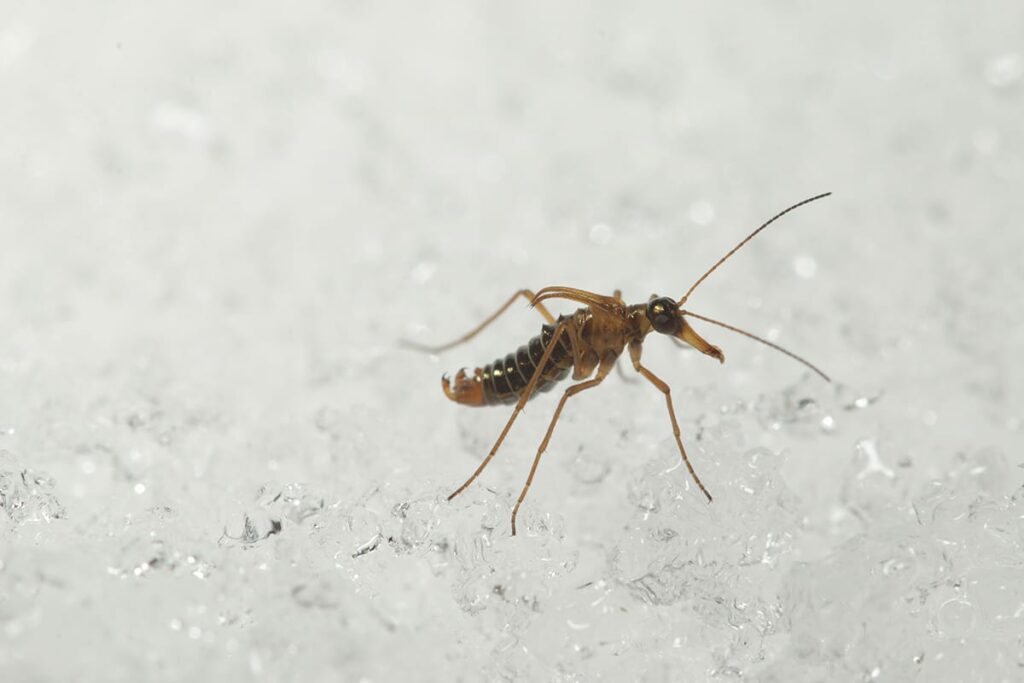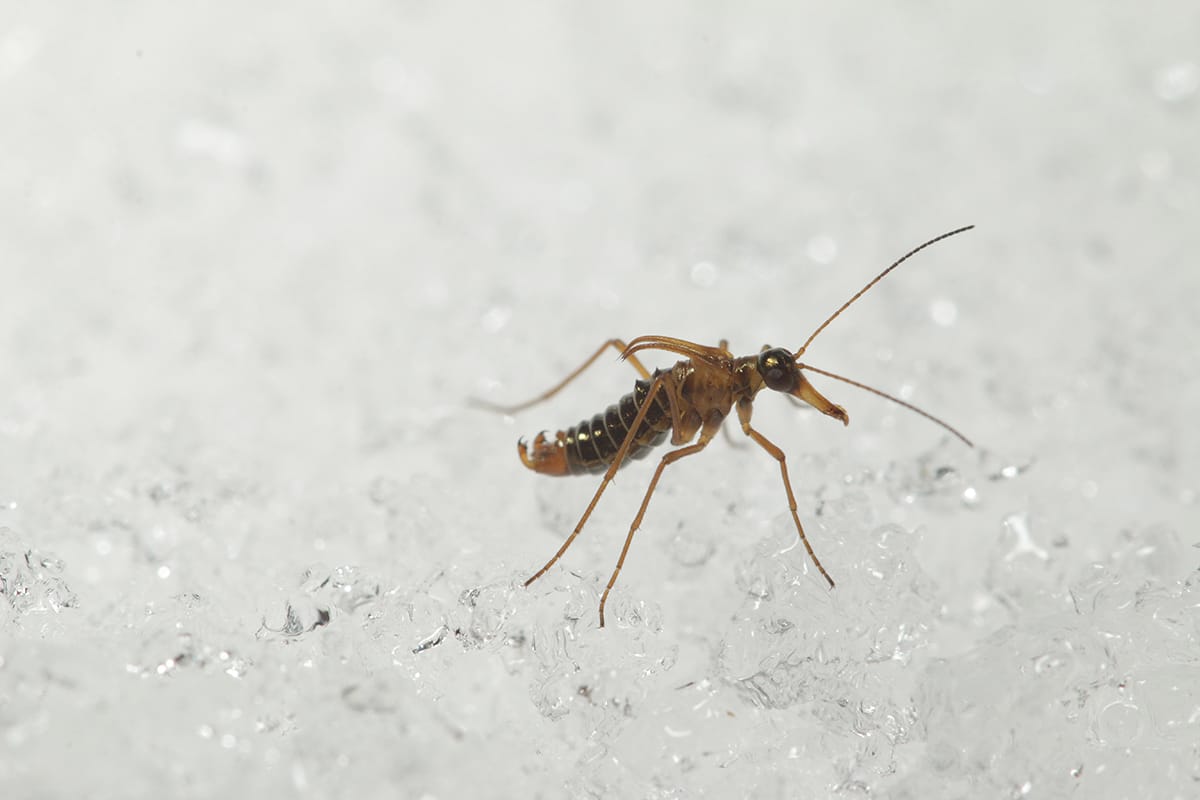
Contents

Winter may be over, but we aren’t done with snow just yet. Or are we? Despite being known colloquially as the snow flea, it is not always found it snow, nor is it an actual flea. These kinds of pests fall within the springtail species, and can be found all year round in a couple different environments. Fortunately, a lot sets snow fleas apart from true fleas.
This past winter you may have witnessed some snow fleas without really even knowing what they were. At first, they just appear as tiny black flecks that are sprinkled in the snow, and can be mistaken for specs of dirt. Upon closer examination, much closer really, you discover that the snow flea is roughly 1/16 of an inch, with a black, segmented body, and six legs.
In the summer and other warmer months, the snow flea can be found around pools with nearby vegetation, around air conditioning condensate drain lines, and other areas with high moisture. They prefer to feed on decaying plant matter, so they could be difficult to get rid of from your house.
What allows the snow flea to be active all year is a special protein in its body. This protein acts like a natural antifreeze. Because there is always the presence of decaying plant matter, then there is always an active time for snow fleas. Even when it’s cold, the snow flea will hang around its natural habitat of damp soil, decaying logs, leaf mold, and fungi.
Snow fleas do not have wings, but use a catapult-like system that allows them to jump to great heights. This can be very noticeable against the white backdrop of snow, as the movement resembles that of a hopping rhythm.
There is much less to fear from them as traditional fleas and your pets. Fortunately, snow fleas will stick to their diet of decaying plant matter. They do not cause any threat to humans or to our pets. Despite that, snow fleas can be a nuisance to homeowners, and removing or preventing them can be a little tricky.
Like many pests, snow fleas will thrive in areas of high moisture. Therefore, to get rid of snow fleas around the home, you must reduce the sources of excess moisture. Standing water is an easy source of moisture for snow fleas, so make sure there are no leaky pipes or small pools both inside and outside. It is more likely that the snow flea will move indoors during the colder months.
Identifying the snow flea takes effort on its own, but removing them from your house could require more effort. When that is the case, you will want to bring in the professionals, like the ones at Van Den Berge Pest Control. For assistance in removing snow fleas, call Van Den Berge Pest Control today at 616-392-7367.
Trust the locally owned, widely renowned experts at Van Den Berge Pest Control for all of your pest needs. With over 100 years of combined experience throughout the Holland, MI-based pest control team, you know you’re in excellent hands with our state-certified experts.
Recent Posts
Comparing Top Flea Extermination Services for Pets
Imagine your friend’s dog, Max, scratching incessantly and suffering from a flea infestation. It’s a
5 Best Indoor Pest Control Strategies for Homes
Imagine walking through your home, only to spot an unwelcome visitor scurrying across the floor.
7 Essential Tips for Professional Flea Extermination
You might think tackling a flea infestation is overwhelming, but it doesn’t have to be.
